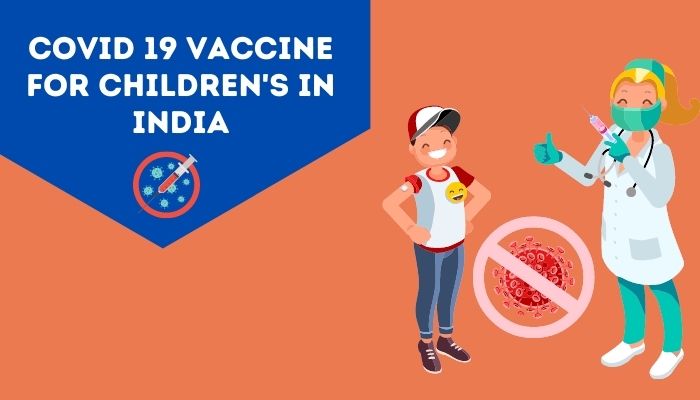This is the most concerning question we should address first to diminish the spread of COVID - 19. Until 2020 it was known that the coronavirus could only be spread through people who had been infected by it and showed the symptoms, whereas lately, it has been discovered that COVID - 19 can also spread through people who showed no signs or symptoms of being ill.
This leaves us in an utter dilemma because if the virus can spread through people without displaying the symptoms, how can we recognize it and help the infected people. Solely for this purpose, scientists and researchers have categorized its spread into three parts - Asymptomatic, Pre-symptomatic, and Mildly symptomatic. These terms will help us better understand the spread of COVID- 19 among people.
Asymptomatic spread
- According to researchers, the people who don't show any symptoms or signs of coronavirus even after being infected with the virus are called asymptomatic. A minority of the people can be labeled under this category.
- Asymptomatic carriers have been verified in certain situations by locating and testing persons in close touch with COVID-19 patients. Different examination actions have shown that around 25% of people who tested positive without symptoms still don't have any signs. Until further testing is done, no one can accurately tell the impact of asymptomatic cases on the spread. And the people who are impacted appear to be young.
Pre - symptomatic spread
- After you read the term pre-symptomatic, it becomes clear that the person infected by a virus but has yet to develop and show any signs of symptoms is called pre-symptomatic.
- According to detailed research, it has been deduced that symptoms may not appear for five to six days or even two weeks after infection. The period between contracting the virus and developing symptoms is the pre-symptomatic phase. People tend to be most infectious immediately around the time symptoms begin. These people are highly capable of transmitting viruses.
- So far, pre-symptomatic is significantly more prevalent than asymptomatic. Around 75% of those who test positive without showing symptoms become pre-symptomatic, presenting coughing, tiredness, fever, and other indicators of COVID-19 in a later follow-up assessment.
Mildly symptomatic spread
- This term itself suggests that people who have been infected by the virus display mild symptoms of it. Hence they are called mildly symptomatic.
- According to some researchers, it is believed to be a lesser-known problem amongst the causes behind the spread of the virus. However, it can easily be transmitted to others when people cough or have a fever. People who continue to visit communal and public locations while suffering from a light cough or moderate fever may unintentionally spread the disease in the early days of symptom development when they are regarded to be most infectious.
- Chills or fever
- Shortness of breath and a dry cough
- Excessive tiredness Muscle or body discomfort
- Headache
- A loss of flavor or odor
- Throat discomfort
- Runny nose or congestion
- Vomiting or nausea
- Diarrhea
Major symptoms can be
- The body can feel heavy
- Breathing problems can occur
- Heart rate increases
- Chest tightening
- Swollen lymph nodes and possibly brain swelling.
Can you have Covid without a fever?
It is quite possible to have covid without having fever since it mentioned in the above topics that there are asymptomatic people who do not show any signs of having the coronavirus, so eleven. However, even if you might not have a fever, you could also be very much infected by the virus and be unaware of it. One way to make sure whether you have covid is by doing a PCR test.Even after learning about the various reasons for the spread of this deadly virus, uncertainty still looms over us. How many persons in the general population are infected with the coronavirus but are unaware of it? There are several uncertainties. However, the researchers still do not verify the quantity spread of asymptomaticity.
The National Institutes of Health have researched blood testing to detect antibodies to COVID-19 to indicate whether a person has previously been infected or not. These studies had shown the statistics about people in different communities that have been infected without realizing it because they had a very mild, undocumented illness or did not have access to testing while they were sick.
Even though there is still much to discover about silent spreading, the worries about this way of transmission provide credence to the advice we've been advised all along by health experts to follow the basic norms and keep a 6-foot distance from people, wash hands often, and wipe down surfaces. It would help if you did not wait around for the symptoms to appear and then make arrangements for others' safety. Instead, you should remain safe than be sorry afterward.
The actual transmission rate is unclear. Numerous specialists have stressed that the exact rates of asymptomatic SARS-CoV-2 infection and transmission remain unclear. Even the health experts have also not been able to identify the accuracy of the asymptomatic transmission rate because, especially without 100% testing, it is unknown who asymptomatic individuals are. The amount they're able to detect who's spreading the virus is still not widely understood since there's no extensive epidemiological monitoring technique.
Compared to the preprint review referenced by WHO, other studies showed more significant estimates of asymptomatic infection. When Scripps Research Translational Institute experts examined the current information, they discovered that up to 40 to 45 per cent of SARS-CoV-2 infections might be asymptomatic. Therefore you should take all the precautions and maintain good hygiene not to contract the virus. Remember always to plan and maintain your health because health is wealth.


